Mystery of Ancient ‘KNOBS’ in Temples - Evidence of Stone Melting /Geopolymer Technology?
Beschreibung
Instagram................ https://instagram.com/praveenET
Twitter...................... https://twitter.com/IamPraveenMohan
Facebook.............. https://www.facebook.com/praveenmohanfans
Website.................... https://www.phenomenalplace.com
https://www.youtube.com/watch?v=UwCLv8wrGMI
Hey guys, I am at the Koh Ker Pyramid in Cambodia, and today we are going to look at a mysterious stone technology called Knobs.You see this protrusion here,this is very fascinating to see. Why does it have a projection like a door knob? If you look at the neighboring blocks, they don't have this protrusion, but this block does. What is the purpose of this knob, why was it created more than a 1000 years ago?
Perhaps you may think this is just an exception. So when I explore this level of the pyramid, this is not the ground level, I am walking on one of the steps of this stepped pyramid, again look at this block. See that block which has a plant growing on top of it, that is the block which has a knob.
It clearly has a protrusion, a bump facing outside. Why were these created, what is the purpose of them?
Let me show you another Temple in India, this is the famous Brihadeeswarar Temple in Thanjavur. This is also built around the same time as the Koh Ker Pyramid, this is also at least a thousand years old, this is also a Shiva temple, and this is also a Pyramid, some fascinating coincidences, even though both of them are separated by about 3000 miles. But perhaps the biggest coincidence is their giant lingams, the lingam at Thanjavur temple is 13 feet tall from the ground, and it also goes underground for many feet, and remember I talked about the Giant Crystal Lingam which existed in Koh Ker Pyramid. But let us go back to the mystery of knobs. We are able to see knobs in this temple as well.
I shot this in 2013, because it has some very very intriguing details. This is all solid granite, huge blocks perfectly fit together, you cannot even insert a needle between the blocks, they look as though they are molded and assembled. But look at the knobs. I noticed something strange about how they were set up.
If the walls have no carvings or inscriptions, then we can see a lot of knobs. Here, look, you can see a cluster of knobs on these walls. The entire wall is full of blocks with knobs. But if the wall was designated to have carvings or inscriptions, then there are no knobs at all. They are perfectly smooth. The more I observe this, the more I find this to be true.
Another fascinating detail, look at this wall. No knobs at the eye level, but the stones with knobs are used where people would not normally see them. It appears that the stone blocks with knobs were used in unimportant places, as though they are defective pieces from a mass manufacturing company. What do I mean by this? Today, let us say you want to build a nice big house and you mass produce 50,000 bricks and you end up with about 500 bricks which are deformed or defective, what would you do? You don't want to throw away 500 bricks, so you would use them in unimportant places or in places where they won't be seen. This is exactly what we see in this temple.
The blocks with knobs are used in Unimportant or places where they won't be noticed. And you may think, wow that’s a lot of knobs, but the stone blocks with knobs just make up 1 or 2% of the temple. And these knobs are not only found in Cambodia and India, they are found in Egypt, Peru, Turkey and in almost all ancient megalithic sites.
You can see these knobs in any ancient site, even though the purpose of this has been a mystery, until now.
Mainstream archeology gives a strange answer to this, experts say these knobs were cut, while the stones were quarried. Why? So they could put ropes underneath the stones and lift them. But when we carefully observe the position of the knobs, many of them are not symmetrical, if you take this stone for example, and put a rope underneath these knobs, the stone would tip forward or to the side.Many of the knobs are not symmetrical and it would be impossible to use them for putting ropes underneath and lifting them.
A lot of these knobs are also too small, you cannot put ropes underneath this knob for example, the knob is just too small, even to put your finger underneath and lift it.Archeologists don't have an answer for this.And then, there is another question that should have popped into your head already. If these knobs were cut for the purpose of lifting, , then all the stone blocks should have these knobs. But they don't. Why don't all the blocks have these knobs? The mainstream explanation makes no sense. This explanation is quite simply, wrong.
Let us take a look at it from the engineering perspective. Why we were these knobs created?
#Cambodia #Ancienttechnology #PraveenMohan

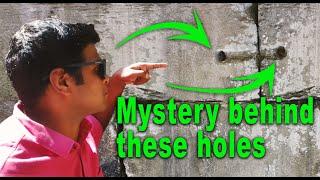
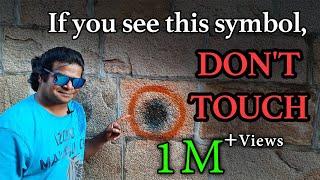
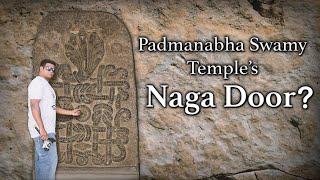
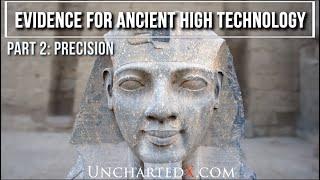
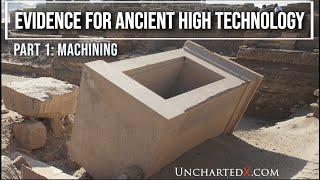

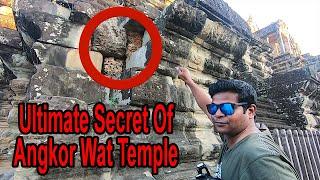
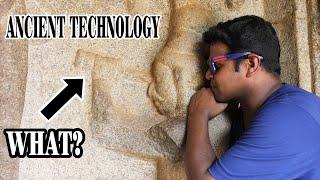
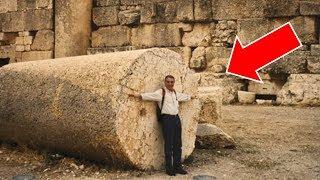










Denn viele Steine sitzen ja wie zusammen geschweißt aufeinander. Und das kann nur durch große Hitzeeinwirkung geschehen sein. Unsere Vorfahren, wenn es überhaupt Vorfahren waren müssen Wissen gehabt haben, evtl. "freie Energie" zu nutzen.
Dass sie Tempelanlagen noch relativ primitiv errichtet haben zeigt mir, dass sie dieses Wissen von Ausserirdischen erhalten haben.
Ausserirdische selbst, hätten nämlich so nach meiner Ansicht, nicht gebaut.